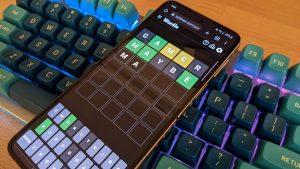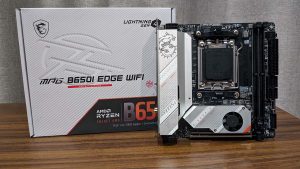Over the last few years, USB Power Delivery (PD) has become standard on many batteries, such as power banks. But did you know that there’s an application where professionals rely on this technology daily, with a special kind of battery to meet their demands? Looky here:
Background
Power banks with USB PD are extremely popular. People use them to charge their phones and even laptops in a pinch. USB PD is versatile; depending on the implementation it can deliver 5V/9V/12V/15V/20V at up to 5 Amperes (Amps). Usually the power banks are rated by their capacity, which is usually expressed in milliAmp Hours (mAh). These are usually impressive, large numbers but don’t really mean as much as the number of Watt hours the battery can hold. The most popular capacity hold a little less than a 100 Watt hours, as that’s the largest battery that you can fly with on a commercial flight.
Power banks have a Battery Management System (BMS) which provides supervisory and safety functions. To fly on an aircraft, the battery must hold less than a 100 Watt hours of power, therefore the most popular size is the 99 Watt hour. Consequently this is usually where the best value
USB PD is a standard which connects two devices, a host (usually the power bank) and a device being charged or powered. There are two microcontrollers and supporting circuitry which negotiate the voltage and current. One is on the host, the other is either in a cable (called a trigger cable) or the device itself. A trigger cable is useful when the connected device does not have USB PD capability. The trigger cable negotiates the voltage and the amperage with the host, and passes it on to the device.
For example, you can use a 15V @ 3A (45 Watts) USB-C trigger cable to a 5.5mm OD x 2.5mm ID barrel plug to connect with a NVIDIA Jetson Orin Nano or Jetson Xavier NX Developer Kits. 45 Watts is the maximum that the developer kit can support.
Note that power banks typically output a set number of watts. Usually these are divided into 45W of PD, 65W of PD, or 100W of PD. 140W of PD are just becoming available on the market.
While power banks are good choices for powering your Jetsons and electrical projects, they are consumer products. You’ll need to do some research to find out if a particular power bank provides the claims on the box. Let’s just say that some manufacturers stretch the truth sometimes. For example, the power bank might be able to supply 100W of PD, but only for a few minutes.
Mini V-Mount Batteries
One consumer accessible group that uses similar technology is the film industry. Over the last couple of years, we’re seeing manufacturers provide USB PD technology in their V-Mount battery packs. There are several standard styles of battery packs, many are defined by the way that they are mounted on equipment.
Around 30 years ago, Sony introduced what are called V-Mount batteries. The attachment point on the battery looks like a V. Over the years this has become an industry standard for powering cameras, lights and monitors. As battery technology evolved, the batteries became smaller in size.
V-Mount
D-Tap
Interface Ports
Because V-Mount batteries are often used in harsh environments with a critical use case (you can’t afford to miss the shot), the batteries need to perform to a higher level than the consumer power banks. Also, the batteries need to be able to stand more charge/discharge cycles as the batteries will endure much more use over their lifetime than a power bank. Therefore the quality of materials and specifications adherence are much more important. Also, the BMS is usually of higher quality than a commercial power bank.
Note that these are professional solutions, so they are more expensive than power banks. With that said, the prices tend to fluctuate quite a bit. Because these are considered as a commodity in the film industry, there tend to be good discounts periodically to get people in the door. These saving can be significant, sometimes around 30%.
V-Mount batteries are available in 50 Watt hours, 99 Watt hours, 155 Watt hours, and 212 Watt hours categories. This is due to the capacity of the battery cells and their configuration within the power bank.
In addition to USB PD on the USB-C port, some V-Mount batteries have USB Quick Charge (QC). This is delivered on a USB A port, and supplies different voltages much like the PD system. However, because QC requires licensing, there tend to be less devices and trigger cables supporting that standard.
The V-Mount batteries also offer what is called a D-Tap jack (see image above). This may also be called a P-Tap. D is the shape of the connector, P stands for power. From the D-Tap battery, you can get the full current of the battery at the battery cell voltage.
The V-Mount batteries use lithium-ion cells, which have a nominal voltage of 3.7V. Fully charged, the cells are ~4.2V and discharged ~ 3.2V. The 4 cells are in series, so the output from the D-Tap is between ~12.8V to ~16.8V fully charged. Usually you can get at least 10A from the battery, which means that the D-Tap can power a NVIDIA Jetson AGX Orin Dev Kit at full load. The AGX Orin maximum is ~ 108W. This includes the Jetson itself and connected peripherals.
V-Mount Batteries
To help with your research, here are some mini V-Mount batteries to investigate. Each model of battery has different features, and there are sure to be quirks. Remember, your choice depends on the application that you are implementing. Take the time to make sure it meets your requirements.
Usually I try not to provide this many links, but there’s a lot out there.
SmallRig V-Mount Battery VB50, 50Wh / 3400 mAh
SmallRig V Mount Battery VB99, 99Wh / 6700mAh
SmallRig V Mount Battery VB99 Pro, 99Wh / 6700mAh
SmallRig V Mount Battery VB155, 155Wh / 10500mAh V-Mount Battery
SmallRig x Caleb Pike V Mount Battery VB212, 212Wh / 14400mAh V-Mount Battery
NEEWER Mini V Mount Battery 6800mAh 99Wh 14.5V, Mini V Lock Battery with 65W PD
SmallRig Mini V-Lock Assembly Kit, V Mount Battery Plate
45W Fast Charger USB C Charger
Trigger Cables
Adafruit USB Type C 3.1 PD to 5.5mm Barrel Jack 9V 5A
D-Tap Male to Right Angle DC 2.5mm Cable
USB C PD DC Voltage Trigger Test Module
As always, you should test your wiring before powering up your project:
Digital Multimeter Entry Level, good value Aneng AN8008
Conclusion
The mini V-Mount Batteries are great for projects. They are designed and built for professional applications. One useful feature is a standard mounting system, which means a standard footprint and attachment point. If you need a bigger battery, you can always trade up and not worry about a mounting strategy. The draw back, in comparison to power banks, is that they usually cost more.
Another advantage that the V-Mounts have is that since they are designed for harsher environments (many say that they are fireproof) that makes them good candidates for mobile platforms. You probably wouldn’t use them for aircraft, certainly any ground based vehicle would make a good candidate.
This is certainly useful to know about, even if you’re not in the market right now. Check it out!
The post V-Mount Battery to Power NVIDIA Jetson Electronics Projects appeared first on JetsonHacks.












